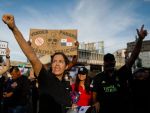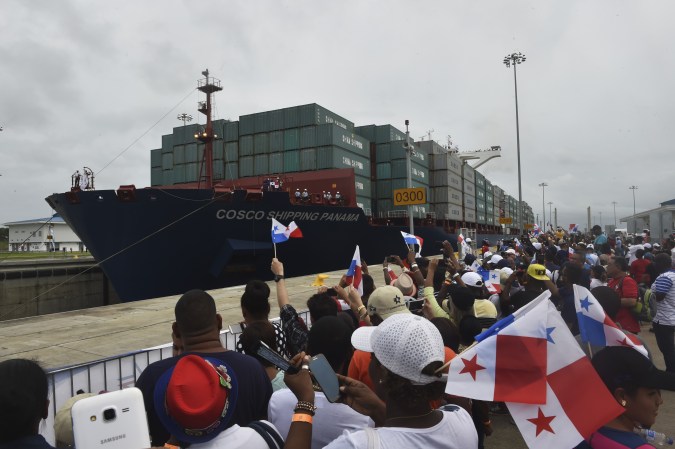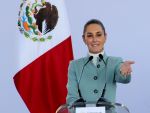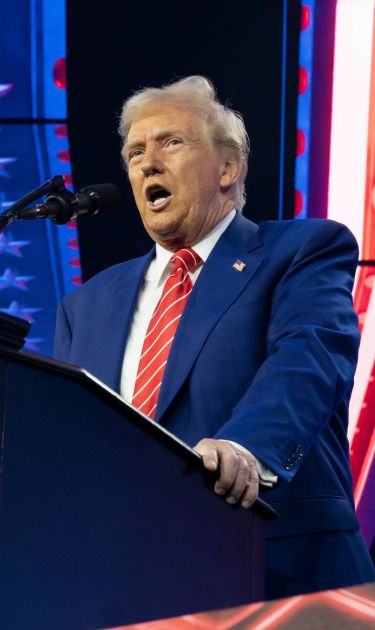The President of the United States, Donald Trump threatened to take control of the Panama Canal on Sunday (December 22) while speaking to a crowd of supporters at AmericaFest in Phoenix. And now he’s done it again during his inauguration on January 20, 2025. Trump was referring to the artificial 82-kilometer waterway in Panama that connects the Atlantic Ocean with the Pacific Ocean, one of the major conduits for maritime trade worldwide.
“Has anyone ever heard of the Panama Canal?” Trump said at AmericaFest. “Because we’re being ripped off at the Panama Canal like we’re being ripped off everywhere else.” Panamanian President José Raúl Mulino responded to Trump’s claims with: “Every square meter of the Panama Canal and the surrounding area belongs to Panama and will continue belonging (to Panama).” In response, Trump posted an image of an American flag flying over what looks like the Canal, with the caption “Welcome to the United States Canal!.”
On Saturday (December 21), Trump also posted several lengthy posts to Truth Social in which he spoke about the Canal and warned that “If the principles, both moral and legal, of this magnanimous gesture of giving are not followed, then we will demand that the Panama Canal be returned to us, in full, and without question.” He was likely referring to the fact the Canal was in U.S. control for over 80 years before it was transferred back to Panamanian control, though missing some critical facts on how these events transpired.
Here, as someone who has worked for the Panama Canal Authority, I debunk some of Trump’s biggest claims about the Panama Canal made during AmericaFest and that he reiterated during his inauguration.

1. “The Panama Canal was Built at a HUGE cost to the United States in lives and treasure.”
President-elect Trump claimed on Truth Social that 38,000 American men died from infected mosquitos in the jungles during the construction of the Canal. These numbers are unsupported by any evidence. The official numbers indicate 5,609 died during the construction, but they weren’t “American men,” as Trump claimed, but workers recruited mostly from the Caribbean islands. The stretch of land where the Canal was built was mostly not the jungle, either, and the most treacherous part of the construction was the Culebra Cut, which was mountainous terrain.
2. “It was given to Panama and the people of Panama, but it has provisions.”
Trump claimed the Canal was “given” to the people of Panama, but that there are provisions that would allow the U.S. to take the Canal back. That is simply not so. Panama has always disputed the validity of the original treaty that gave the U.S. control over the Canal, as it was signed by a “representative” not authorized by the government and who wasn’t even Panamanian. But in 1977, facing immense international pressure to restore Panama’s sovereignty and after clashes between the U.S. military and Panamanian civilians had left multiple civilians death, a new Panama Canal Treaty was signed. This treaty expressly stated that the so-called Panama Canal Zone would cease to exist on October 1, 1979, and the Canal itself would be turned over to the Panamanians on December 31, 1999.
Another treaty, known as the Neutrality Treaty was signed at the same time, and states that the United States could use its military to defend the canal against any threat to its neutrality. That, however, never meant retaking control over the Canal, and is instead more a war provision than anything else.


A giant Chinese-chartered freighter nudged its way into the expanded Panama Canal on Sunday to mark the completion of nearly a decade of work forecast to boost global trade. / AFP / RODRIGO ARANGUA (Photo credit should read RODRIGO ARANGUA/AFP via Getty Images)
3. The U.S. and only the U.S. built the Panama Canal as it exists today
The United States did build the Panama Canal as it existed until 2016. But they only built the Miraflores and Gatun locks. In 2007, Panama started an expansion of the Panama Canal to keep the Canal competitive, building two new sets of locks that doubled the Panama Canal’s capacity and allowed for the passage of larger ships, known as “Neopanamax” vessels. That means, that technically, the part of the Canal the U.S. built only accounts for half of the capacity of the waterway today, and only services the smaller ships.
Esteban Sáenz, who was the Executive Vice President of Operations of the ACP while the Expansion was taking place, explained that at the Canal’s best, before the recent draught affected the amount of ships that could pass through daily, “eight vessels, primarily megacontainerships, passed through the newest locks.” Meanwhile, “between 25 and 30 ships transited the older, smaller locks. However, the Panama Canal Authority income between the two passage options comes out to about a 50-50 split.” Right now the daily slots are at 36.
4. China controls or administers the Panama Canal
China does not control or administer the Panama Canal, the Panama Canal Authority—a Panamanian government agency, fully independent and run by Panamanians does. China isn’t even the biggest user of the Canal, as Trump noted, the U.S. is. Hong Kong-based CK Hutchison Holdings operates a company called Panama Ports, which operates the ports of Balboa (Pacific) and Cristóbal (Caribbean) in Panama. They won the right to do so after participating in a public tender in Panama in 1997, while the Canal was still technically under U.S. control.

5. Panama is charging “exhorbitant prices” to the U.S.
The Panama Canal prices are standard across the board, with no country or ship paying “more” in base fee just because of what country they’re coming from or heading to. Instead, the fee is only determined by the facts of the ship. As the Panama Canal is first and foremost, a business, the pricing structure reflects the value of the service to each vessel, which means it takes into account vessel size, type and the cargo carried.
From the time the Canal opened, in 1914, to 2024, the Panama Canal fees haven’t even increased as much as the annual inflation rate, while the value of the Canal in shipping and global trade has increased exponentially.




